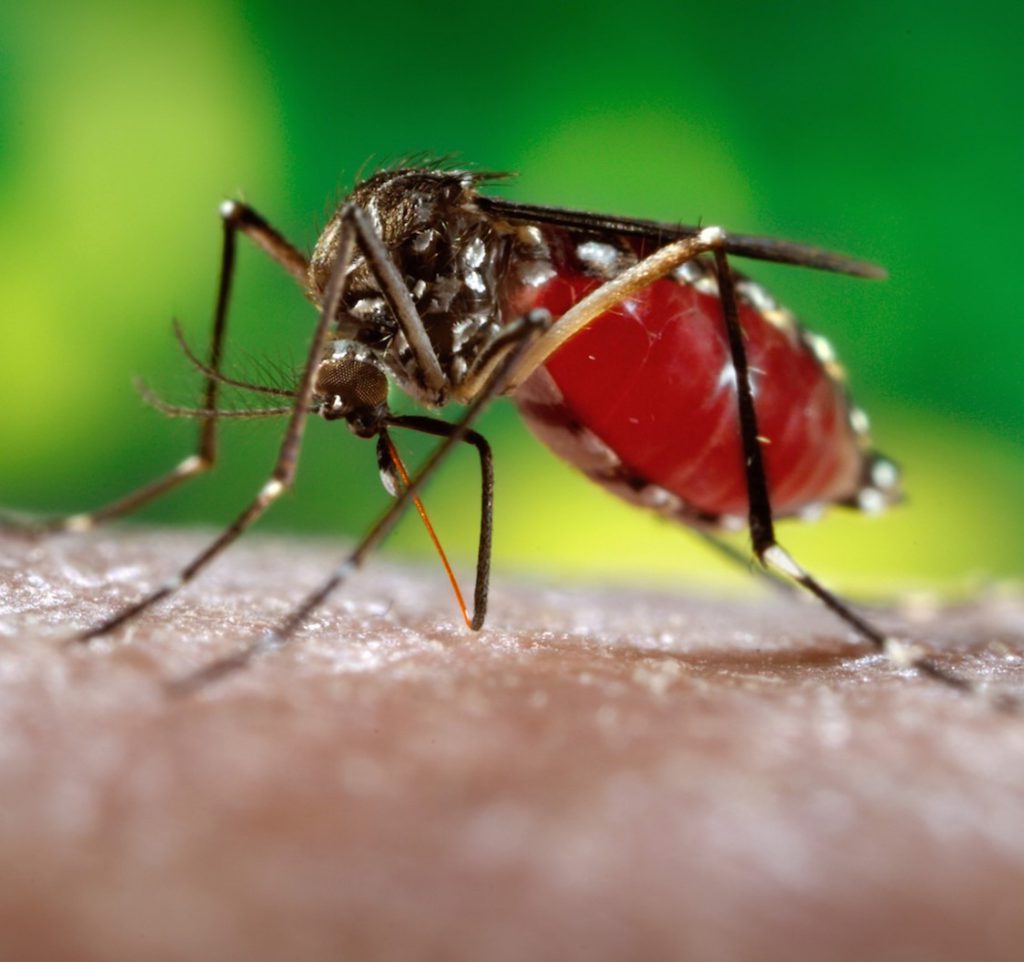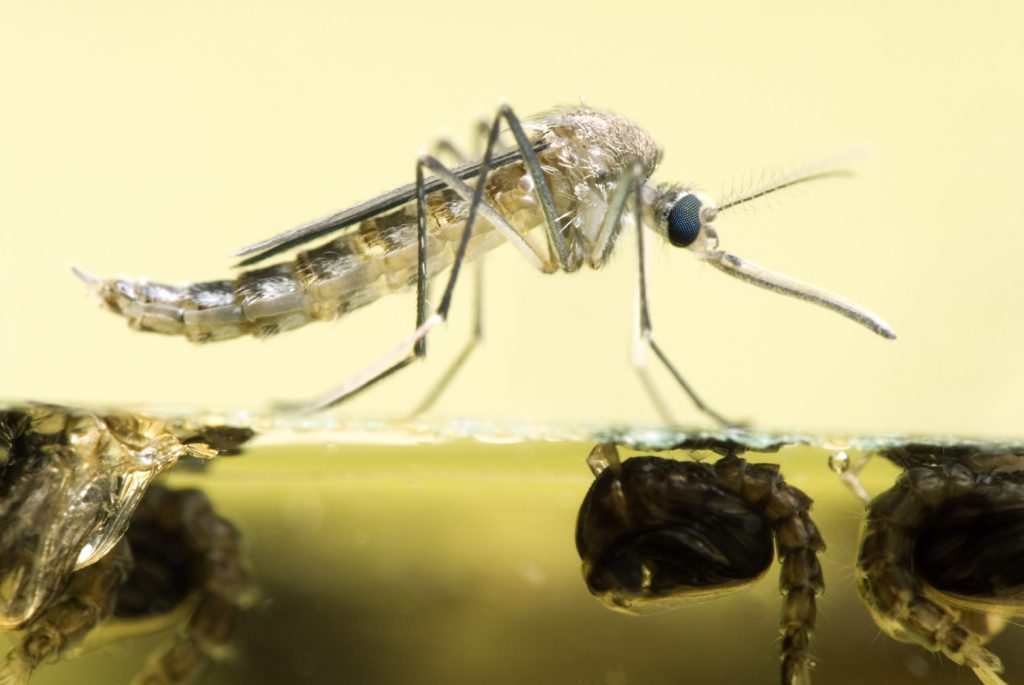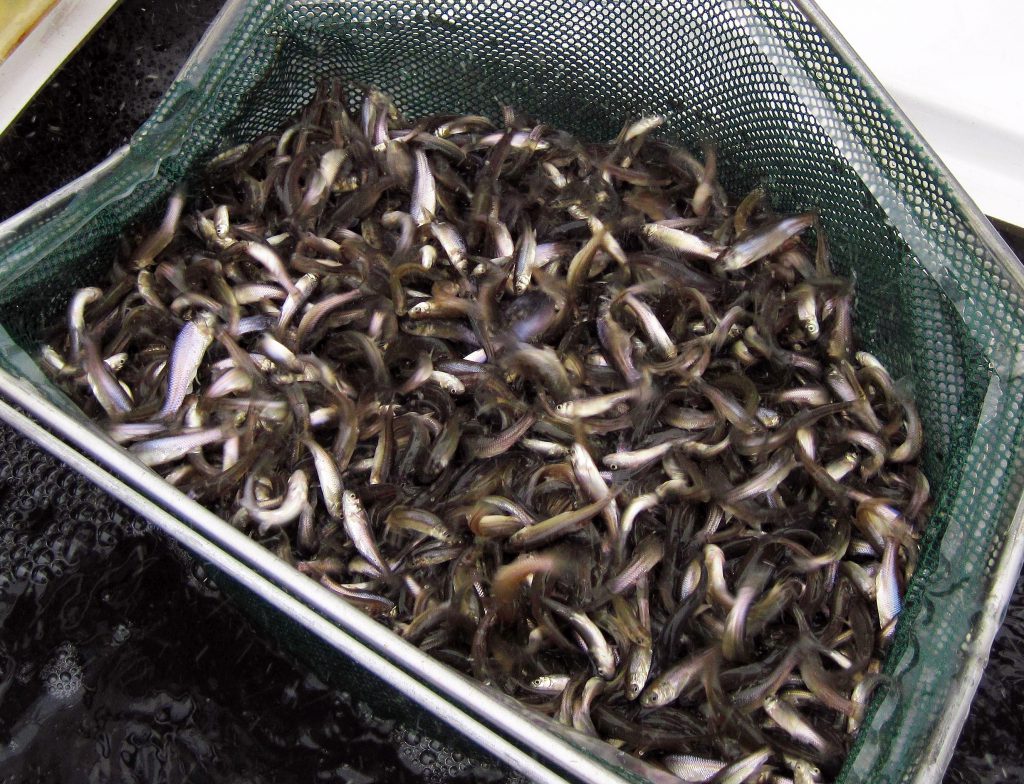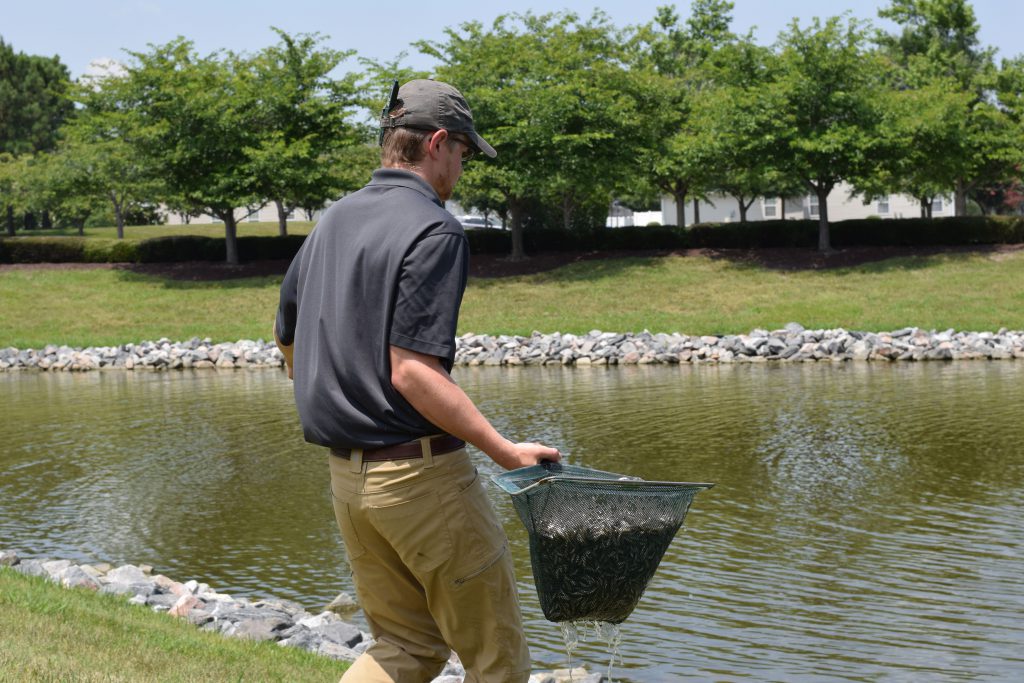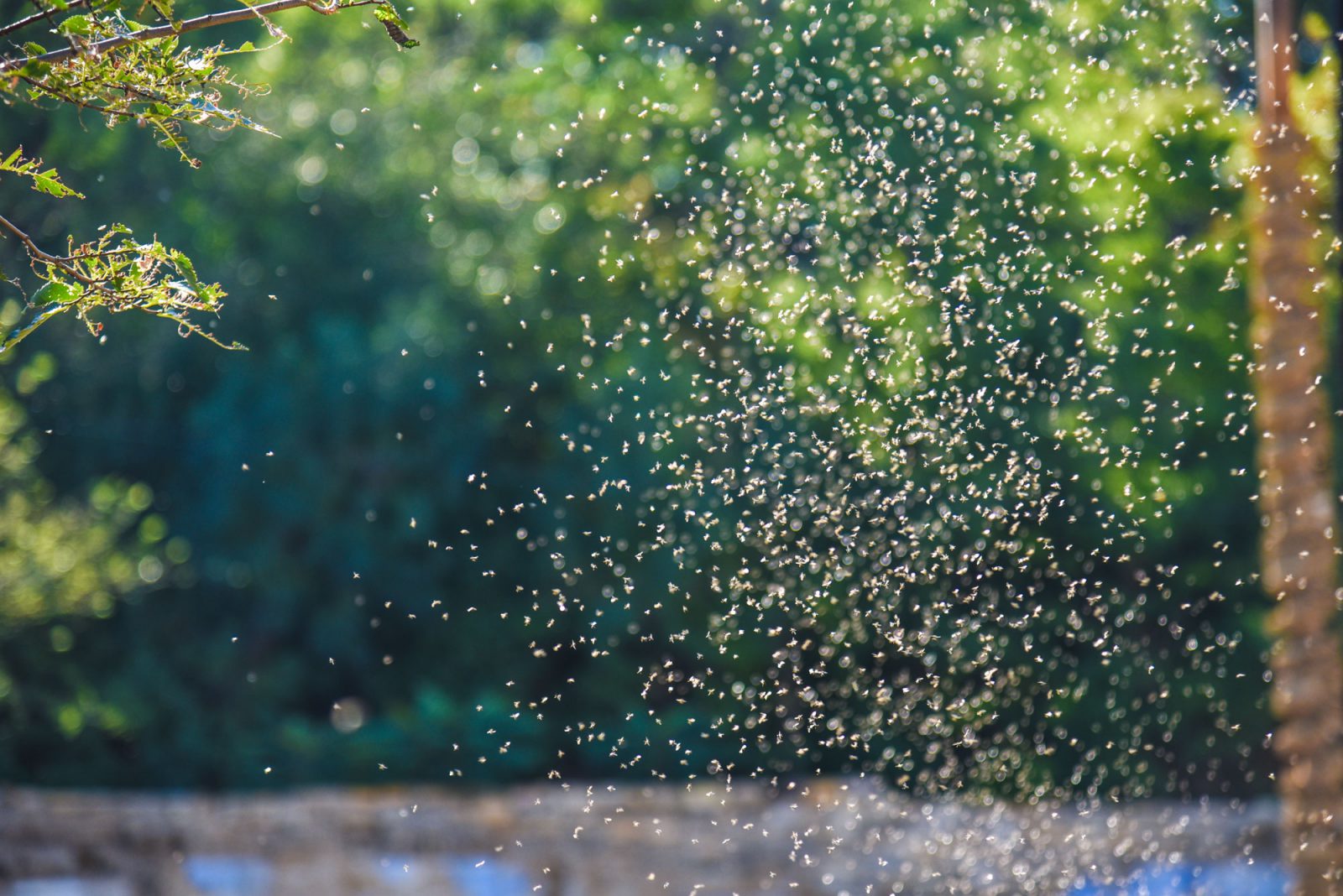
What Kind of Fish Eat Mosquito Larvae?
If just the thought of mosquitoes makes your skin itch, we feel your pain. Mosquito bites are no fun, and when these pesky flying insects come from a beautiful lake or pond in your community, it feels like the ultimate betrayal. If the itchy discomfort of mosquito bites isn’t enough motivation for property managers to keep them under control, the fact that they can spread diseases such as West Nile Virus, Yellow Fever, Dengue, and Eastern Equine Encephalitis should cinch the deal.
What Do Mosquitoes Feed On?
Male mosquitoes only eat nectar, while female mosquitoes are the blood-suckers that find their prey through a combination of smell, body heat, and exhalation of carbon dioxide. They favor people with type O blood and are most likely to avoid those with type A blood.
There are 3,000 mosquito species throughout the world that cause more than 2 million deaths a year; however, they don’t all feast on humans. Some species rely solely on horses, birds, frogs, turtles, or pets for bloodmeal. Cats and dogs are affected by mosquito-borne diseases, such as heartworms, which travel through the animal’s bloodstream and infest their heart. If left untreated, this can cause permanent respiratory problems and death.
What Is the Mosquito Lifecycle?
Mosquitoes are opportunists and not too picky about where they breed. They don’t care for running water but any other stagnant water will do, including wet or clogged gutters, buckets or watering cans, birdbaths, potholes, untreated swimming pools, potholes, and even water pooled inside an old tire.
Female mosquitoes often lay more than 200 eggs at a time. These eggs develop into larvae that remain in the water until they hatch. Mosquito eggs don’t develop into larvae until they are completely submerged under the water, which means some eggs can survive on top of the water until conditions are appropriate for their development. Once laid, some mosquito eggs survive up to five years.
When mosquito eggs hatch into larvae, they have tubular bodies. They remain submerged and periodically surface to breathe through their abdominal spines. Mosquito larvae feast on bacteria that tend to grow in stagnant water. They also eat the fungi and algae that grow in lakes and ponds without proper circulation.
The larvae go through four stages until they develop into adults and become airborne, an event that happens several days after the eggs submerge. Males generally live about ten days, and females may live as long as 56 days.
The Four Mosquito Life Stages
The first three mosquito life stages occur in water, until the final, adult stage when mosquitoes can fly. The four mosquito life stages are:
- The egg hatches when submerged underwater
- The larvae or wriggler lives in the water, molts several times, and breathes air
- They become a pupa or tumbler, the non-feeding stage just prior to the mosquito becoming an adult
- The adult emerges from the water and flies as soon as its body parts have hardened. Mosquitoes can fly approximately 1 – 1.5 miles per hour.
What Are Common Mosquito Predators?
Mosquitoes are perennial summertime pests, but in some southern states, they are a year-round issue. Luckily, they have many natural predators including dragonflies, slider turtles, some bat species, and some bird species. Fish are one of the most important mosquito predators.
There are many different species of fish that eat mosquito larvae, especially during their juvenile growth periods. The smaller fish will continually graze on mosquito larvae populations and disrupt their lifecycle by preventing them from becoming adults.
Mosquito Predators
Mosquitofish (Gambusia affinis): With a name like mosquitofish, you know this one has to top the list of mosquito larvae predators. As the name suggests, mosquitofish excel at eating mosquito larvae. In fact, just one mosquitofish can eat an estimated several hundred mosquito larvae a day. They don’t take up a lot of room, either, since they max out at 2”- great for almost any waterbody. Because they are so small, it’s critical to make sure they have hiding spaces to seek refuge from their natural predators.
Guppies (Poecilia reticulata): Guppies (also known as rainbow fish or millionfish) are related to the mosquitofish and share their appetite for mosquito larvae. They come in colors that are more exciting than mosquitofish, making them an excellent choice for small, decorative ponds. They don’t grow larger than 2” in length and are quick swimmers, which makes them a key predator for mosquito larvae. They are tropical fish, however, and don’t do well in environments where the temperature falls below 54 degrees. In fact, they are one of the world’s most widely distributed tropical fish.
Eastern mudminnow (Umbra pygmaea): The eastern mudminnow is a very hardy and very common fish that eats mosquito larvae. They do particularly well in marshes, wetlands, and waterbodies with excess mud and dense vegetation. They also reproduce fast and prolifically, but are subject to predation from larger fish in a lake or pond.
Do Goldfish Eat Mosquito Larvae? Other Species of Fish That Eat Mosquito Larvae
Although the fish above are the primary consumers of mosquito larvae, there are other fish that also feast on mosquito larvae. These include the sailfin molly (Poecilia latipinna) and the least killifish (Heterandria formosa). The killifish is considered the best of the two at mosquito control. Large predator fish can have an impact as well, though they tend to move on to bigger prey as they grow. These include goldfish, bass, bluegill, and catfish.
Mosquito & Midge Larvae Prevention
Stocking and maintaining fish that eat mosquito larvae is just one piece of mosquito control and management. In addition to fish stocking, make sure you regularly empty or maintain outdoor containers to keep mosquitoes from breeding. Consider adding a floating fountain or submersed aerator to keep water from becoming stagnant. Establish a beneficial shoreline buffer to help intercept debris that can prevent proper pond circulation. In areas with standing water that are more difficult to maintain, like gutters and rain barrels, use dunks that contain specific metabolites of spores of the bacterium Bacillus thuringiensis israelensis to target larvae without harming nearby fish or other beneficial insects.
If your mosquito problems are becoming too much of a burden for the community to handle, contact a mosquito management company like SOLitude’s sister company Vector Disease Control International (VDCI). Professional mosquito control experts have access to the latest tools, technologies, and research to monitor mosquito populations and keep them at bay all year long.
Build Your Mosquito Management Plan
Call us at 888-480-5253 or complete the form below to connect with an aquatic management expert.
SOLitude Lake Management is a nationwide environmental firm committed to providing sustainable solutions that improve water quality, enhance beauty and preserve natural resources.
SOLitude’s team of aquatic scientists specializes in the development and execution of customized lake, stormwater pond, wetland and fisheries management programs. Services include water quality testing and restoration, algae and aquatic weed control, installation and maintenance of fountains and aeration systems, shoreline erosion control, muck and sediment removal and invasive species management. SOLitude partners with homeowners associations, golf courses, private landowners, businesses and municipalities. SOLitude Lake Management is part of Rentokil, a leading business services company, operating across the United States, Canada and Puerto Rico.
For more information, visit SOLitude Lake Management at solitudelakemanagement.com, and connect on Facebook, LinkedIn and Twitter.








